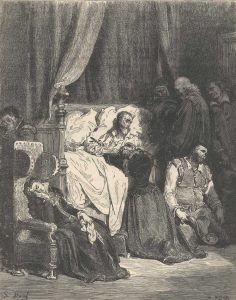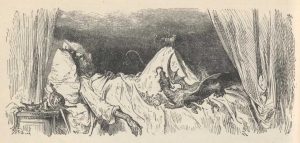Riassunto
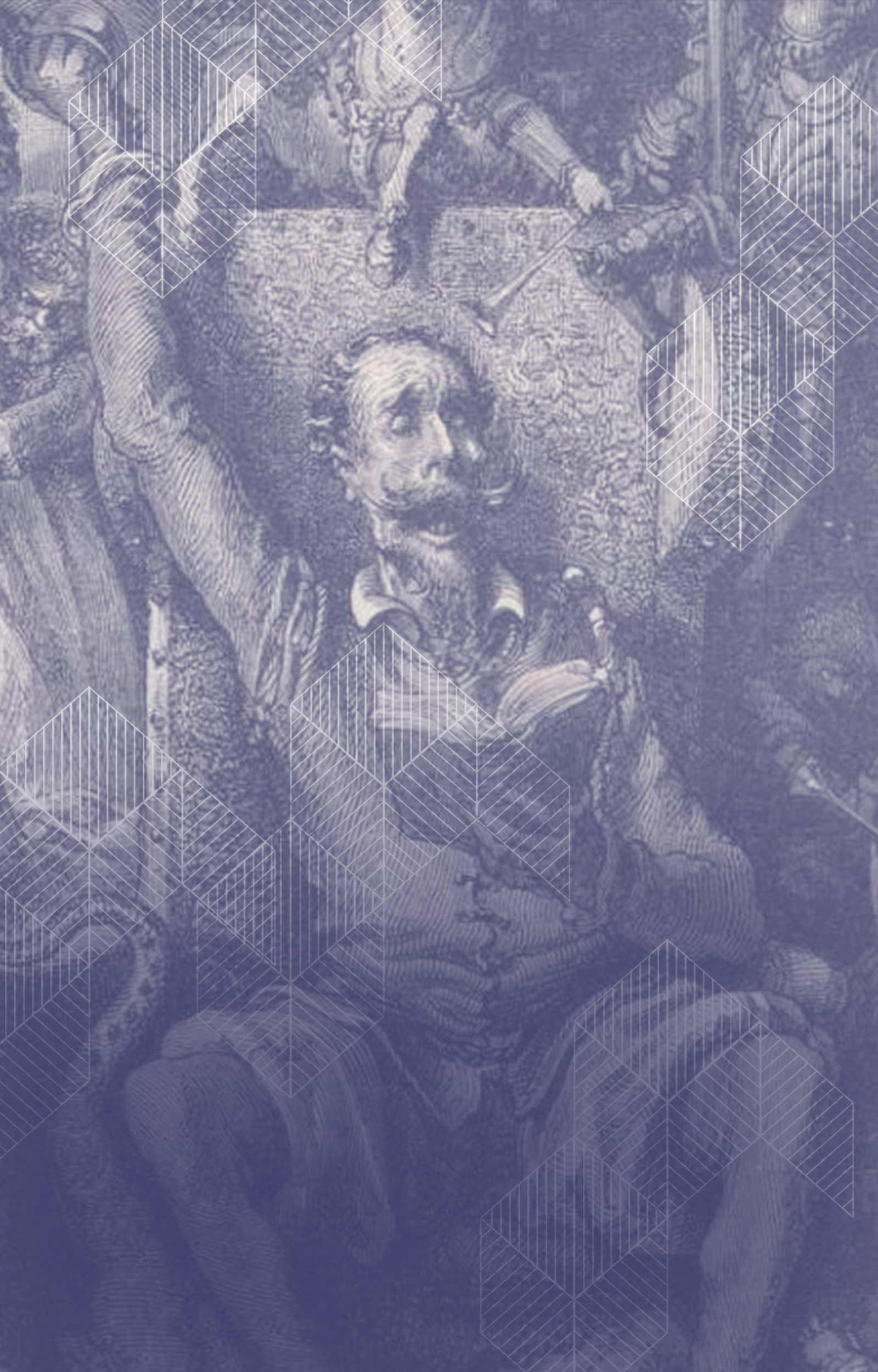
Leggere
Ascoltare
Lingua dei Segni

Riassunto
Risorse Pedagogiche
Opere d’arte
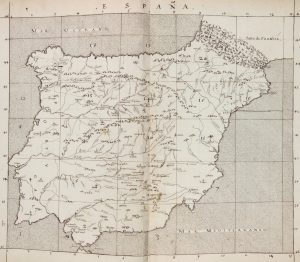
Alonzo de Santa Cruz, Mapa da Península Ibérica, ca. 1538-1554. Atlas Nacional de España (ANE) ©Instituto Geographico Nacional

Gustave Doré (illustrator) and Héliodore Pisan (engraver), World of disorderly notions, picked out of his books, crowded into his imagination, 1863. Wood Engraving. Hachette, Paris. Project Gutenberg ©Public Domain

Gustave Doré (illustrator) and Héliodore Pisan (engraver), On the eve of his knighthood, the Don performs a vigil in the innyard, 1863. Wood Engraving. Hachette, Paris. ©wikiart
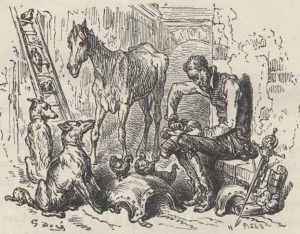
Gustave Doré (illustrator) and Héliodore Pisan (engraver), D. Quixote polishing his armour, 1863. Wood Engraving. Hachette, Paris. Project Gutenberg ©Public Domain
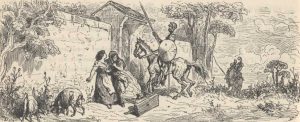
Gustave Doré (illustrator) and Héliodore Pisan (engraver), Quixote arrives at an inn, 1863. Wood Engraving. Hachette, Paris. Project Gutenberg ©Public Domain

Gustave Doré (illustrator) and Héliodore Pisan (engraver), Chrysostom in love with the beautiful Marcela, 1863. Wood Engraving. Hachette, Paris. Project Gutenberg ©Public Domain
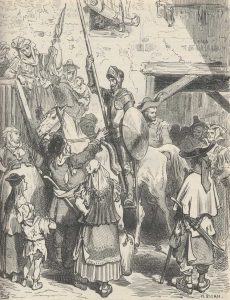
Gustave Doré (illustrator) and Héliodore Pisan (engraver), The innkeeper request paymen for the night’s lodging, 1863. Wood Engraving. Hachette, Paris. ©wikiart
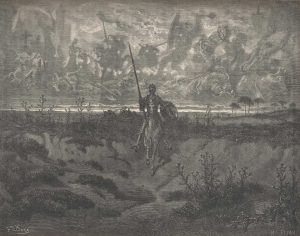
Gustave Doré (illustrator) and Héliodore Pisan (engraver), The Don on his first sally forth, 1863. Wood Engraving. Hachette, Paris. ©wikiart

Gustave Doré (illustrator) and Héliodore Pisan (engraver), He promises to make Sancho the Governor of some conquered island, 1863. Wood Engraving. Hachette, Paris. ©wikiart
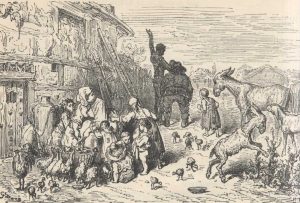
Gustave Doré (illustrator) and Héliodore Pisan (engraver), Don Quixote persuades Sancho Panza to become his squire, 1863. Wood Engraving. Hachette, Paris. ©wikiart
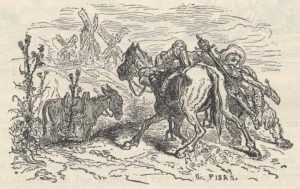
Gustave Doré (illustrator) and Héliodore Pisan (engraver), Sancho Panza helps Don Quixote ride Rocinante, 1863. Wood Engraving. Hachette, Paris. Project Gutenberg ©Public Domain
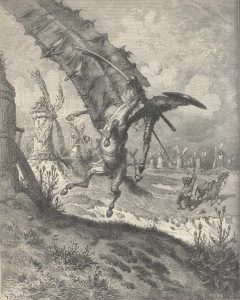
Gustave Doré (illustrator) and Héliodore Pisan (engraver), Don Quixote attacks a giant (windmill), 1863. Wood Engraving. Hachette, Paris. Project Gutenberg ©Public Domain

Gustave Doré (illustrator) and Héliodore Pisan (engraver), Sancho comes to Don Quixote’s aid, 1863. Wood Engraving. Hachette, Paris. ©wikiart

Gustave Doré (illustrator) and Héliodore Pisan (engraver), After his beating, the Don calls for his ideal lady, Dulcinea del Tobosco, 1863. Wood Engraving. Hachette, Paris. ©wikiart
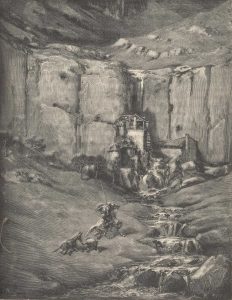
Gustave Doré (illustrator) and Héliodore Pisan (engraver), The waterfall and the noisy hovels, 1863. Wood Engraving. Hachette, Paris. ©wikiart
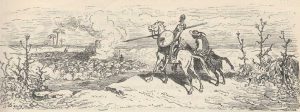
Gustave Doré (illustrator) and Héliodore Pisan (engraver), Don Quixote and Sancho Panza see a great dust cloud, 1863. Wood Engraving. Hachette, Paris. Project Gutenberg ©Public Domain
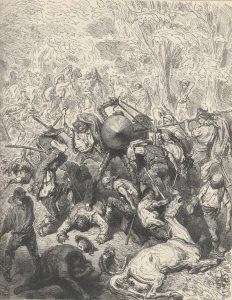
Gustave Doré (illustrator) and Héliodore Pisan (engraver), The fight against the muleteers from Yanguas, 1863. Wood Engraving. Hachette, Paris. ©wikiart

Gustave Doré (illustrator) and Héliodore Pisan (engraver), The Don attacks the flock of sheep, 1863. Wood Engraving. Hachette, Paris. ©wikiart

Gustave Doré (illustrator) and Héliodore Pisan (engraver), Don Quixote sees Mambrino’s helmet, 1863. Wood Engraving. Hachette, Paris. Project Gutenberg ©Public Domain

Gustave Doré (illustrator) and Héliodore Pisan (engraver), Don Quixote celebrates his conquest of Mambrino’s helmet observed by Sancho Panza, 1863. Wood Engraving. Hachette, Paris. Project Gutenberg ©Public Domain
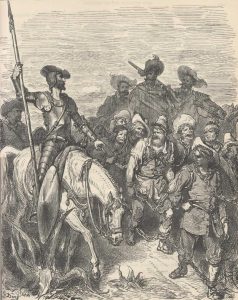
Gustave Doré (illustrator) and Héliodore Pisan (engraver), Don Quixote interrogates the criminals being led by the galleys, 1863. Wood Engraving. Hachette, Paris. ©wikiart
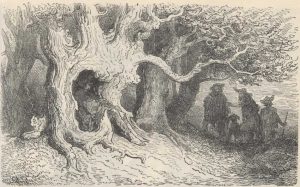
Gustave Doré (illustrator) and Héliodore Pisan (engraver), The goatherds find the stange young man housed in a hollow tree, 1863. Wood Engraving. Hachette, Paris. ©wikiart
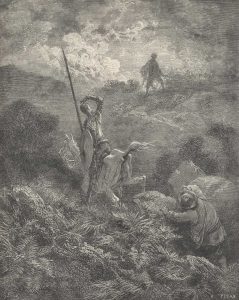
Gustave Doré (illustrator) and Héliodore Pisan (engraver), The travelers see a ragged man leaning among the rocks, 1863. Wood Engraving. Hachette, Paris. ©wikiart
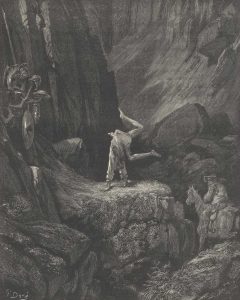
Gustave Doré (illustrator) and Héliodore Pisan (engraver), Sancho watches Don Quixote perform some penitential tumbles, 1863. Wood Engraving. Hachette, Paris. ©wikiart
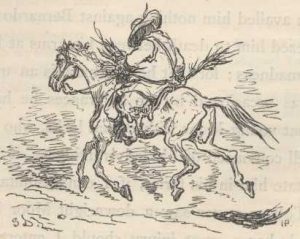
Gustave Doré (illustrator) and Héliodore Pisan (engraver), Let’s let him have his way, all the way back, 1863. Wood Engraving. Hachette, Paris. Project Gutenberg ©Public Domain

Gustave Doré (illustrator) and Héliodore Pisan (engraver), In the costume of a walking damsel and the barber in his squire’s habit, 1863. Wood Engraving. Hachette, Paris. Project Gutenberg ©Public Domain
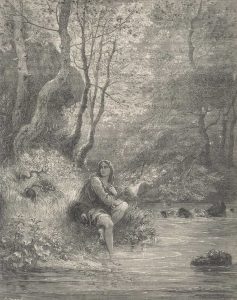
Gustave Doré (illustrator) and Héliodore Pisan (engraver), A beautiful young woman, Dorotea, disguised as a boy, bathes her feet, 1863. Wood Engraving. Hachette, Paris. ©wikiart

Gustave Doré (illustrator) and Héliodore Pisan (engraver), In Cardenio’s story, Luscinda faints on her wedding day, 1863. Wood Engraving. Hachette, Paris. ©wikiart

Gustave Doré (illustrator) and Héliodore Pisan (engraver), Luscinda gives a passing stranger a clandestine letter for Cardenio, 1863. Wood Engraving. Hachette, Paris. ©wikiart

Gustave Doré (illustrator) and Héliodore Pisan (engraver), Don Quixote regales the party at the inn with theoretical reflections, 1863. Wood Engraving. Hachette, Paris. ©wikiart

Gustave Doré (illustrator) and Héliodore Pisan (engraver), The Don carried to his cage, 1863. Wood Engraving. Hachette, Paris. Project Gutenberg ©Public Domain
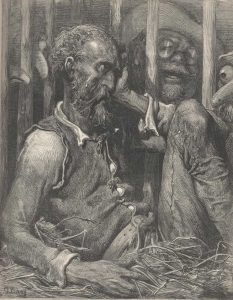
Gustave Doré (illustrator) and Héliodore Pisan (engraver), The Don is placed in a cage, 1863. Wood Engraving. Hachette, Paris. ©wikiart

Gustave Doré (illustrator) and Héliodore Pisan (engraver), Don Quixote is brough home in a wagon, 1863. Wood Engraving. Hachette, Paris. ©wikiart

Gustave Doré (illustrator) and Héliodore Pisan (engraver), Alonzo Quijano: books and dreams, 1863. Wood Engraving. Hachette, Paris. Project Gutenberg ©Public Domain

Gustave Doré (illustrator) and Héliodore Pisan (engraver), Back home, Don Quixote talks sensibly with his family and friends, 1863. Wood Engraving. Hachette, Paris. ©wikiart

Gustave Doré (illustrator) and Héliodore Pisan (engraver), Samson Carrasco, 1863. Wood Engraving. Hachette, Paris. Project Gutenberg ©Public Domain
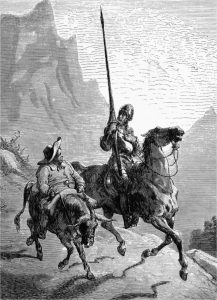
Gustave Doré (illustrator) and Héliodore Pisan (engraver), Don Quixote and Sancho setting out, 1863. Wood Engraving. Kharbine-Tapabor Collection, Paris. ©wilkiart

Gustave Doré (illustrator) and Héliodore Pisan (engraver), 1863. Wood Engraving. Hachette, Paris. Project Gutenberg ©Public Domain
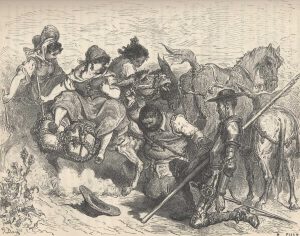
Gustave Doré (illustrator) and Héliodore Pisan (engraver), Sancho convinces Don Quixote that the three peasant women are Dulcinea and two of her attendants in a state of enchantment, 1863. Wood Engraving. Hachette, Paris. ©wikiart
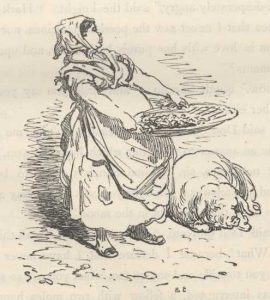
Gustave Doré (illustrator) and Héliodore Pisan (engraver), Fake Dulcinea, 1863. Wood Engraving. Hachette, Paris. Project Gutenberg ©Public Domain
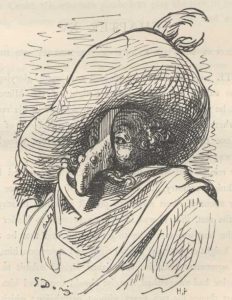
Gustave Doré (illustrator) and Héliodore Pisan (engraver), The ugly squire of the knight of the Woods, 1863. Wood Engraving. Hachette, Paris. ©wikiart
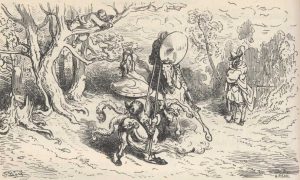
Gustave Doré (illustrator) and Héliodore Pisan (engraver), The battle between that Knight and the Don, 1863. Wood Engraving. Hachette, Paris. ©wikiart
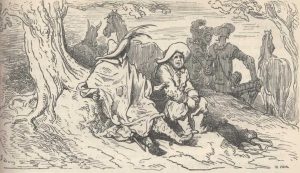
Gustave Doré (illustrator) and Héliodore Pisan (engraver), Don Quixote converse with the Knight of the Wood, 1863. Wood Engraving. Hachette, Paris. ©wikiart

Gustave Doré (illustrator) and Héliodore Pisan (engraver), In the heart of the Sierra Morena, 1863. Wood Engraving. Hachette, Paris. ©wikiart

Gustave Doré (illustrator) and Héliodore Pisan (engraver), Visiting Don Diego, Don Quixote is reminded of Dulcinea at the sight of Jars made in Tobosco, 1863. Wood Engraving. Hachette, Paris. ©wikiart

Gustave Doré (illustrator) and Héliodore Pisan (engraver) 1863. Wood Engraving. Hachette, Paris. Project Gutenberg ©Public Domain
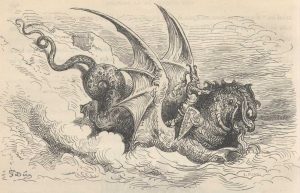
Gustave Doré (illustrator) and Héliodore Pisan (engraver), An exploit of Don Coronglio of Thrace: riding a dragon, 1863. Wood Engraving. Hachette, Paris. ©wikiart
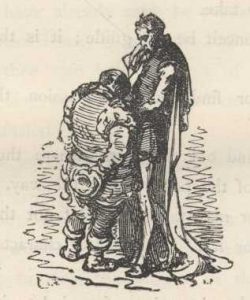
Gustave Doré (illustrator) and Héliodore Pisan (engraver), 1863. Wood Engraving. Hachette, Paris. Project Gutenberg ©Public Domain

Gustave Doré (illustrator) and Héliodore Pisan (engraver), Litigants come before Sancho for legal decisions, 1863. Wood Engraving. Hachette, Paris. ©wikiart

Gustave Doré (illustrator) and Héliodore Pisan (engraver), The Don asks permission to leave the home of the Duke and Duchess, 1863. Wood Engraving. Hachette, Paris. ©wikiart
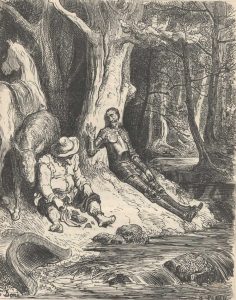
Gustave Doré (illustrator) and Héliodore Pisan (engraver), Don Quixote is too depressed by the adventure of the bulls to join Sancho in a meal, 1863. Wood Engraving. Hachette, Paris. ©wikiart
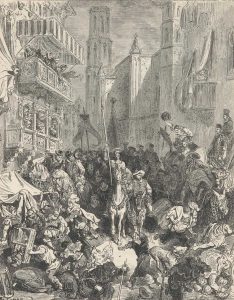
Gustave Doré (illustrator) and Héliodore Pisan (engraver), The Don enters Barcelona, 1863. Wood Engraving. Hachette, Paris. ©wikiart
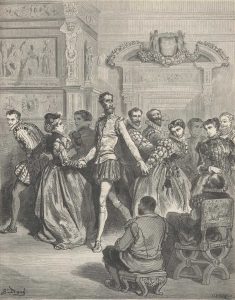
Gustave Doré (illustrator) and Héliodore Pisan (engraver), Two of the ladies dance with the Don until he is exhausted, 1863. Wood Engraving. Hachette, Paris. ©wikiart
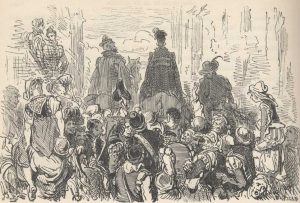
Gustave Doré (illustrator) and Héliodore Pisan (engraver), 1863. Wood Engraving. Hachette, Paris. Project Gutenberg ©Public Domain

Gustave Doré (illustrator) and Héliodore Pisan (engraver), Two of the ladies dance with the Don until he is exhausted, 1863. Wood Engraving. Hachette, Paris. ©wikiart

Gustave Doré (illustrator) and Héliodore Pisan (engraver), 1863. Wood Engraving. Hachette, Paris. ©wikiart

Gustave Doré (illustrator) and Héliodore Pisan (engraver), The Don in sorry shape after his defeat by the Knight of the White Moon, 1863. Wood Engraving. Hachette, Paris. ©wikiart
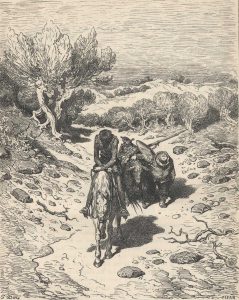
Gustave Doré (illustrator) and Héliodore Pisan (engraver), The two adventurers turn homeward dejectedly, 1863. Wood Engraving. Hachette, Paris. ©wikiart
 1 ora | Romanzo spagnolo
1 ora | Romanzo spagnolo